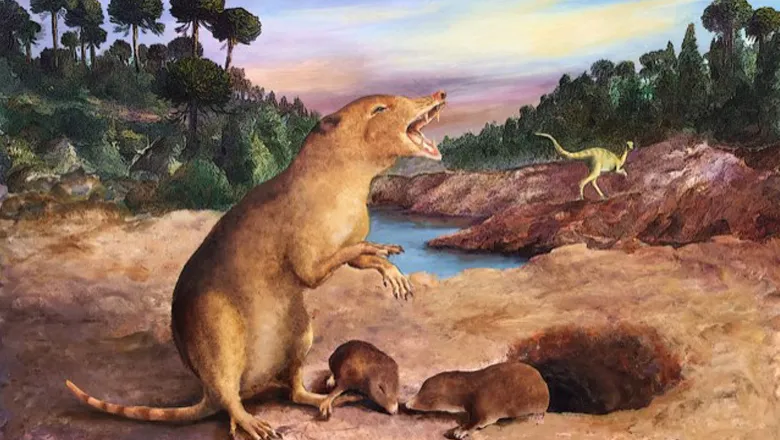The evidence from how the dentition was built over developmental time is crucial and definitive to show that Brasilodons were mammals. Our paper raises the level of debate about what defines a mammal and shows that it was a much earlier time of origin in the fossil record than previously known.
Moya Meredith Smith, contributing author and Emeritus Professor of Evolution and Development of Dentoskeletal Anatomy at King’s College London
06 September 2022
Dental evidence challenges origin time of mammals
New analysis of fossils has provided evidence of mammalian origins 20 million years earlier than previously thought.

New research published in Journal of Anatomy has used dental evidence to challenge the origin time of mammals.
The study, an international collaboration led by the Federal University of Rio Grande do Sul (UFRGS) in Porto Alegre, and which included researchers from King’s College London and the Natural History Museum, examined the lower jaws in fossils of Brasilodon quadrangularis, a mouse sized animal dated to have lived 225 million years ago. The analysis of the different growth stages showing tooth development in each of the fossils provided evidence that these were the remains of a mammal.
Previously, the earliest accepted record in geological time of mammals is 205 million years ago. This new research suggests a much earlier origin of mammals by 20 million years.
Mammalian glands, which produce milk and feed the young of mammals today, have not been preserved in any fossils found to date. Therefore, scientists have had to rely on ‘hard tissues’, mineralised bone and teeth that do fossilise for alternative clues.
Examining the dentitions found in the fossils of Brasilodon quadrangularis from southern Brazil, and dated around 225 million years ago (Late Triassic/Norian), the research team discovered evidence of only one set of replacement teeth. This is a key feature of mammals known as diphyodonty. The first set starts developing during the embryonic stage and a second and last set of teeth develops once the animal is born. By contrast, reptilian dentitions are different, especially in that replacement is ‘many for one’ (polyphyodonty), in which each tooth site has tooth regeneration many times over the lifetime of a reptile to replace damaged ones.
Diphyodonty is a complex and unique phenomenon that, with tooth replacement, also involves profound, time-controlled changes to the skull anatomy, for instance, the closure of the secondary palate (the roof of the mouth) that allows the young to suckle, while breathing at the same time.
This research is a collaboration between Brazilian and British scientists, who brought together their expertise on skull development, dental anatomy, physiology and histology to interpret the juvenal and adult fossils of the extinct species Brasilodon quadragularis.
Dr Martha Richter, Scientific Associate at the Natural History Museum and senior author on the paper
Brasilodon existed at the same time as the oldest known dinosaurs and probably lived in burrows like the shrews today. The new research pushes back the origin of diphyodonty in Brasilodon and therefore also mammals, with related biological traits by 20 million years and illuminates the debate about the rise of mammals in deep time.
Cabreira, S.F., Schultz, C.L., da Silva, L.R., Lora, L.H.P., Pakulski, C. & do Rêgo, R.C.B. et al. (2022) Diphyodont tooth replacement of Brasilodon—A Late Triassic eucynodont that challenges the time of origin of mammals. Journal of Anatomy, 00, 1–17. Available from: https://doi.org/10.1111/joa.13756

